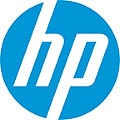September 17, 2021
Improving Business Outcomes with Modern Collaboration Technology
Strategic collaboration solutions and services can help organizations meet their mission-critical objectives.
IN THIS ARTICLE
VIDEO: Collaboration Is Here to Stay
Collaboration in a New Era of Work
Innovations in Collaboration Technology
Strategies for Modern Collaboration
Innovative Collaboration Technologies Can Improve Business Outcomes
When the books are written about the first half of the 21st century, the current era is likely to serve as a great dividing line. Students will learn about the “before” times: when remote work and collaboration tools existed, but many enterprises continued to resist work-from-home programs, fearing diminished productivity or weakened corporate culture. And they will learn about the “after” times: when collaboration technologies were as central to business as the telephone was during the 20th century.
This does not mean that the physical office will disappear entirely (or even shrink significantly). But it does mean that anytime, anywhere collaboration will be an absolute must going forward, now that employees and managers have seen what is possible.
In March 2020, many organizations essentially rolled out a forced proof of concept for collaboration technologies. With employees required to work from their homes to comply with lockdown orders — and with no time to plan — companies had to take leaps of faith, unsure of the eventual results. This harried approach actually had some benefits; rather than digging in their heels and resisting the new technology, workers dived into remote work tools head-first, teaching themselves and their colleagues how to use collaboration platforms and discovering new ways to leverage them for mission-critical workflows. However, the overnight rollouts had some obvious downsides, including potential security vulnerabilities.
With the dust of the initial frenzy of the pandemic now settled, organizations must take a step back to assess their collaboration technologies and optimize them for the future. To do that, IT and business leaders must carefully examine both their current systems and workflows and their business goals.
Why Collaboration Is Here to Stay
Organizations deployed video conferencing solutions quickly to address the pandemic,but innovations such as high-quality cameras and audio are driving long-term adoption ofcollaboration technology.
THE MODERN STATE OF COLLABORATION
Organizations have adopted new strategies to take advantage of enhanced solutions.
Collaboration platforms provide largely the same benefits that many organizations have been experiencing for years, but now more business and IT leaders have come to understand just how transformative these solutions can be.
Collaboration solutions give end users access to features such as voice, calendar, chat and file sharing, as well as video meetings, which have become necessary as employees across industries continue working remotely.
As collaboration technologies have improved, organizations have changed their strategies to take advantage of new capabilities. For example, videoconferencing solutions enabled some organizations to change their approach to work and meetings.
Collaboration in a New Era of Work
In March 2020, many companies had to act quickly to deliver equipment and train users to enable remote work. As the pandemic wears on, some of the difficulties of remote communication persist. However, the adoption of collaboration technologies has helped address some of those challenges and offers several common benefits.
REDUCED COSTS
By enabling face-to-face conversations without travel, collaboration platforms have helped many organizations drastically cut expenses. The restrictions of the pandemic have demonstrated just how many travel-intensive activities can be conducted remotely, via video. Even many industry conferences and conventions have temporarily moved to an online format.
BETTER CUSTOMER ENGAGEMENT
Omnichannel connections open up new possibilities for improving the customer experience. With many organizations now offering customer channels that include chat, texting and video sessions, collaboration suites can help businesses keep pace with their competitors and deliver the sort of service experience customers have come to expect.
GREATER AGILITY
With meetings set up more quickly and simply, work gets done faster. No more waiting for a time when everybody will be in the office. Instead, project managers can take a quick glance at everyone’s shared schedules and find days and times when all parties can connect, from wherever they’re working.
WORKPLACE FLEXIBILITY
Contrary to conventional wisdom, many companies saw slight upticks in employee productivity in the early days of the pandemic, as workers proved adept at managing their time and collaboration on their own schedules. Workplace flexibility also yields a number of benefits related to employee retention and satisfaction.
MORE POWERFUL COLLABORATION
Being able to work with colleagues around the world creates more opportunity for innovation. Over 85 percent of employees say a lack of collaboration or ineffective communication leads to workplace failures — and according to McKinsey, improved internal collaboration could increase the productivity of employees’ interactions by 20 to 25 percent.
Learn how CDW can help improve your remote communications using a comprehensive collaboration strategy.
What Business Leaders Say About Video Collaboration
79%
Video meetings are the best team communication tool for creative and collaborative tasks.
76%
Video meetings help drive the engagement of remote workers.
75%
Video meetings enhance the engagement and effectiveness of remote participants.
74%
Video meetings improve work-life balance for employees by allowing them to meaningfully participate in meetings wherever they are.
72%
Seeing remote workers via video — including where and how they work — helps traditional workers and managers develop trust in remote team members.
66%
Video meetings are particularly effective in enhancing the engagement and effectiveness of remote “gig” workers.
Source: Forbes Insights, "The Visual Advantage" (PDF), October 2019
Innovations in Collaboration Technology
It may be difficult to remember now, but it wasn’t long ago that it seemed as though video collaboration would never have its day. For decades, the technology was described as holding promise for the future, yet it seemed for a long time that vendors might never be able to create an experience that was seamless enough to penetrate the enterprise and consumer markets. The telephone worked, after all, and it was tough for some to imagine how a technology that was (at the time) plagued with glitches and poor resolution could ever be seen as truly necessary.
It’s a happy accident of timing that video collaboration solutions came into their own just as the world desperately needed them. In the years leading up to 2020, vendors had finally created tools that added real value for users. Then, when the pandemic hit, millions of managers and employees were forced to rely on videoconferencing solutions for the first time, and got to see exactly what they could do.
What’s New in Collaboration?
Here are some of the latest innovations in collaboration technologies, and how they can help businesses achieve their goals:

VIDEOCONFERENCING
Videoconferencing is leaps ahead of where it was only a few years ago. High-definition video helps users read each other’s facial expressions and nonverbal cues more easily, leading to a more lifelike experience that mimics face-to-face interaction. Additional features such as screen sharing add even more value, making video collaboration the preferred form of communication for many business professionals.

BACKGROUNDS
A background image on a video call may seem unimportant — but, as knowledge workers with messy living rooms and home offices across the country will attest, a smart-looking background can make a meeting feel more professional. Virtual backgrounds are sufficient for most meetings, but fabric or paper backwalls are small investments that create a nice touch.

CAMERAS
Cameras can be an important differentiator in video meetings, especially where a stationary camera might lead to a dull experience. As employees return to physical offices, many companies will likely see the need to invest in tools such as wide-angle cameras, 360-degree HD cameras and pan-tilt-zoom cameras that can focus on the action of a meeting without sacrificing resolution.

COLLABORATION SOFTWARE
Collaboration suites have much to offer, including calendar integration, meeting transcription, virtual meetings, noise reduction, chat, voice commands and artificial intelligence. With many features integrated in a single solution, users can easily and instantly escalate interactions as necessary. Organizations that can help their employees effectively leverage such collaboration tools will position their users for success.

AUDIO FEATURES
Although it is often overlooked, audio quality is a critically important factor in an effective video collaboration solution. Today, enterprises can buy microphones and speakers made by vendors that have traditionally been associated with music production and recording, and then integrate these tools with their video collaboration systems. Conference rooms should also receive professional acoustical treatments to improve audio.

DATA AND DOCUMENT SHARING
When the pandemic hit, many organizations found that their on-premises file shares overwhelmed their VPN connections. Companies can modernize their files by moving data to cloud collaboration solutions, giving employees instant access to data from wherever they’re working. Technology training can encourage adoption and help ensure that all employees are using the data- and document-sharing features of collaboration tools.

DISPLAYS
The emergence of ultrahigh-definition displays may seem like an incremental improvement over the already high quality of HD displays. However, when people interact in person, they make all sorts of subconscious observations about other people’s facial expressions that can sometimes be lost in video calls. With today’s high-quality displays, meeting participants can more accurately convey their affect and meaning.

DATA ANALYTICS
Through data analytics, organizations can get real-time information about when and how employees are using collaboration solutions. These tools give visibility down to the user level, helping IT departments and managers better understand who is (and who isn’t) using new tools, allowing them to either offer additional assistance or pull back resources to optimize the collaboration environment.
Speak with a CDW Amplified™ Workspace expert about your communication, collaboration and digital workspace needs.
Video Collaboration: By the Numbers
Since the COVID-19 pandemic forced a rapid and unexpected increase in remote work, videoconferencing has become an essential tool for communication and collaboration. As many companies have begun adopting more permanent remote and hybrid work environments, the importance of videoconferencing technology has only increased.
Among remote employees, 87 percent say video collaboration helps them feel more connected to their colleagues, and 36 percent of employees would choose the opportunity to work remotely over a pay increase.
During the pandemic, 67 percent of companies increased their spending on videoconferencing tools. Nearly all business stakeholders (94 percent) say that video collaboration improves productivity.
In 2020, some videoconferencing platforms saw up to a 2,900 percent increase in daily active users. By 2023, the market for video collaboration technology is predicted to be $13.8 billion.
Companies report cost savings of up to $11,000 per year for each employee using video collaboration tools. Employees themselves can save $2,000 to $7,000 per year via videoconferencing.
Source: uctoday.com, "Must Have Video Conferencing Statistics 2020," July 27, 2020
Strategies for Modern Collaboration
Business and IT leaders have a wealth of options for collaboration technologies. With so many options available, it can be tempting to think that enabling effective collaboration requires nothing more than simply purchasing an off-the-shelf software suite and rolling it out to employees. However, different businesses will need to deploy and manage different solutions in different ways, depending on their business goals. Organizations must deploy the appropriate infrastructure to support their collaboration environments, take strategic steps to ready their organizations for change and consider value-added services that will help ensure the success of their efforts.
Often, a trusted third-party partner can help organizations optimize their collaboration environments.

INFRASTRUCTURE
Getting infrastructure right starts with assessing a business’s current environment and establishing its needs. When assessing existing infrastructure and establishing goals for the future, IT teams should consider factors such as security posture, network connectivity and storage needs. Leaders also must assess how people are currently working and where opportunities might be found to fill gaps between existing workflows and the business’s desired end state. To minimize disruption to the organization, it’s important to assess existing workspaces (both home and office) and to consider how workflows have changed in recent years. Application planning is another important decision, and organizations should spend as much time as possible selecting the right solution.

STRATEGIC STEPS
While the appropriate software and infrastructure are necessary for improving collaboration within an organization, they are not sufficient. True collaboration requires cultural change, starting with buy-in and full-throated endorsement from management, which will eventually lead to a top-to-bottom embrace of new technologies and workflows. It’s not enough to simply offer a few training sessions. The organizations that see the most success in their collaboration rollouts are those that invest in internal marketing and communication around adoption. Training should be highly tailored, giving end users insight into how they can use the new collaboration tools to become more effective in their specific jobs. At the same time, IT staff must receive training that empowers them to best support end users.
SERVICES
Often overlooked by organizations rolling out collaboration technologies, third-party services can be a critical factor in driving the effectiveness of such implementations. Service engagements not only bring much-needed expertise and an outside perspective to collaboration efforts, but they also prevent internal IT staffers from becoming overburdened by the combined workload of their day-to-day tasks and a monumental new initiative.
CDW offers a number of engagements, from envisioning to ongoing management, to help organizations succeed at every step of the process:
Envisioning: During the envisioning stage, CDW’s experts help company stakeholders align their business goals with an outcome-based collaboration strategy. This is the step where managers identify the “Big Why” guiding their collaboration efforts. It also ensures that organizations will be able to determine whether new solutions are helping them meet their most pressing business needs.
Success planning: Once CDW’s experts have helped an organization identify the goals it’s trying to achieve, they can advise on which solutions are best suited for reaching them. This is a step where outside advice is especially useful, as CDW’s solution architects have seen countless enterprises deploy virtually every major collaboration platform and have witnessed the results firsthand.
Success orchestration: CDW’s solution architects and project managers can help implement and orchestrate new technologies, preventing common configuration problems. This ensures that employees are set up for success from the first day and that project goals and target dates are met.
Management and measurement: Finally, CDW can help organizations track, manage, optimize and enhance collaboration solutions over time. A collaboration effort shouldn’t be considered “finished” when the rollout is complete, even if the new technology is empowering employee communication and collaboration as expected and meeting all of the organization’s initial goals. Businesses that see the most success with their collaboration efforts are those that continue to set the bar higher as new technologies and ways of working present themselves.
Story by Ozzie Vargas, an enterprise collaboration consultant with CDW. He works with customers to develop a collaboration strategy, understand their business goals and expectations and map them to the corresponding technology.
Story by Marguerite Stevens, a leader and expert in UCaaS, managed security and SD-WAN services.




